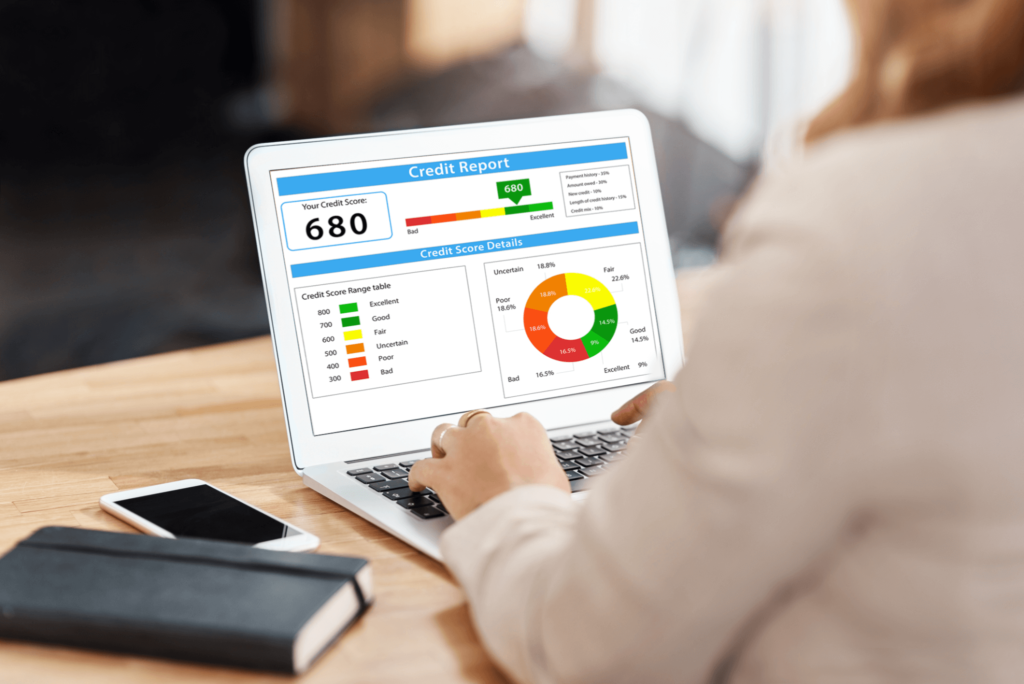Rewriting Your Credit Story: Steps Toward Financial Freedom
Understanding the Power of Credit
Credit is more than a number—it’s a representation of your financial habits, trustworthiness, and access to financial opportunities. Whether you’re repairing damaged credit or starting fresh, taking deliberate steps toward improving your credit can significantly impact your financial future.
In this comprehensive guide, we’ll explore actionable strategies to help you rewrite your credit story and unlock the doors to financial freedom.
Why Your Credit Story Matters

The Role of Credit in Modern Life
From securing a mortgage to qualifying for a personal loan, your credit score plays a critical role in nearly every major financial decision. A strong credit profile offers:
- Lower interest rates
- Higher credit limits
- Better loan approvals
- Improved rental opportunities
- Employment credibility in some sectors
The Emotional and Financial Toll of Poor Credit
A low credit score doesn’t just affect your wallet—it also impacts your peace of mind. Constant debt collector calls, loan rejections, and limited financial options can create stress and diminish confidence.
Step 1: Assess Where You Stand
Reviewing Your Credit Report
Start by requesting a copy of your credit report from all three major credit bureaus—Equifax, Experian, and TransUnion. Under law, you’re entitled to one free report from each bureau per year via AnnualCreditReport.com.
Review your reports for:
- Payment history
- Credit inquiries
- Outstanding debts
- Potential errors or inaccuracies
Identifying the Red Flags
Common red flags include:
- Late or missed payments
- Charged-off accounts
- High credit utilization
- Collections or public records
Correcting these issues is the first step in rewriting your credit narrative.
Step 2: Dispute and Correct Errors
Filing Disputes with Credit Bureaus
If you find errors in your report:
- File a dispute online or by mail
- Include supporting documentation (bank statements, payment receipts, etc.)
- Monitor the status—bureaus must respond within 30 days
Common Errors to Watch For
- Accounts that don’t belong to you
- Incorrect payment statuses
- Duplicate listings
- Outdated personal information
Step 3: Pay Down Existing Debts
Tackle High-Interest Accounts First
The debt snowball and debt avalanche methods are two popular strategies:
- Snowball: Pay off smallest balances first
- Avalanche: Focus on highest interest rates first
Both build momentum and reduce overall debt load.
Negotiating With Creditors
If you’re struggling:
- Request a hardship program
- Ask for a lower interest rate
- Settle for less than owed (note: may affect credit score)
Step 4: Build Positive Credit History

On-Time Payments Are Crucial
Set up autopay or reminders to avoid missed due dates. Consistently paying on time accounts for 35% of your credit score.
Consider a Secured Credit Card
If you have poor or no credit:
- Apply for a secured card backed by a cash deposit
- Use it for small, manageable purchases
- Pay the full balance monthly
This helps establish a positive payment history.
Use Credit Builder Loans
Credit-builder loans are small loans held in a bank account while you make payments. Once repaid, the money is yours and your credit history improves.
Step 5: Lower Your Credit Utilization
The 30% Rule
Credit utilization ratio = current balances ÷ total credit limit. Aim to keep this under 30%, and ideally under 10% for optimal scores.
Requesting Credit Line Increases
If your financial situation has improved, ask your credit card issuer for a higher limit. Don’t increase your spending—just keep the ratio low.
Step 6: Limit New Credit Inquiries
Understanding Hard vs. Soft Inquiries
- Soft inquiries don’t impact your score (e.g., pre-approval checks)
- Hard inquiries do (e.g., applying for a loan or credit card)
Too many hard inquiries in a short time can hurt your score.
Be Selective With New Applications
Only apply for new credit when absolutely necessary. Multiple rejections can snowball into worse credit problems.
Step 7: Keep Old Accounts Open
The Power of Credit Age
Length of credit history makes up 15% of your score. Even if you no longer use an account, keeping it open helps maintain a long average credit age.
Managing Inactive Accounts
To avoid closure:
- Use the card occasionally for small purchases
- Set up autopay for a subscription
Step 8: Get Professional Help If Needed

Credit Counseling Services
Certified nonprofit credit counselors can:
- Review your finances
- Create a budget
- Provide debt management plans (DMPs)
Look for agencies accredited by the National Foundation for Credit Counseling (NFCC).
Avoiding Scams
Be wary of companies that:
- Promise instant credit repair
- Ask for payment upfront
- Avoid disclosing your rights
Legitimate services are transparent and regulated.
Also Read : What Is A Credit Line And How Does It Work?
Conclusion
Rewriting your credit story isn’t about erasing the past—it’s about taking control of your future. Through consistent effort, strategic planning, and the right support, you can transform your credit from a barrier into a stepping stone toward lasting financial freedom.
It takes time, patience, and discipline, but every step you take is a chapter in a better financial story—one that leads to opportunity, confidence, and peace of mind.
Frequently Asked Questions (FAQs)
How long does it take to improve a credit score?
It depends on the severity of your credit issues and the consistency of your new habits. Minor improvements may be seen in 3–6 months, while significant boosts can take 12–24 months.
Can I remove late payments from my credit report?
If it’s a mistake, you can file a dispute. If it’s accurate, you can request a goodwill adjustment by writing a letter to the creditor explaining your circumstances.
Do credit repair companies really work?
Some do—but many are scams. Reputable agencies offer guidance and help negotiate with creditors. Be cautious and research thoroughly.
Will paying off collections improve my score?
Yes, but it depends. Some scoring models, like FICO 9 and VantageScore 3.0+, ignore paid collections. Older models may not.
Should I close unused credit cards?
Usually not. Closing cards lowers your total credit limit and shortens your credit history, which can hurt your score.
What is a good credit score?
Credit scores typically range from 300 to 850. A score of:
- 700+ is considered good
- 750+ is very good
- 800+ is excellent
Can I build credit without a credit card?
Yes. Alternatives include credit-builder loans, being added as an authorized user, and reporting rent payments via services like Experian Boost.
What is credit utilization and why does it matter?
Credit utilization is the ratio of your credit card balances to your credit limits. It makes up about 30% of your credit score. Lower is better.
Is it okay to carry a balance on my credit card?
No. Pay off your balance in full each month to avoid interest charges and demonstrate responsible credit usage.
Can student loans help build credit?
Yes. On-time student loan payments contribute to your credit history. Defaulting, however, can severely damage your score.
